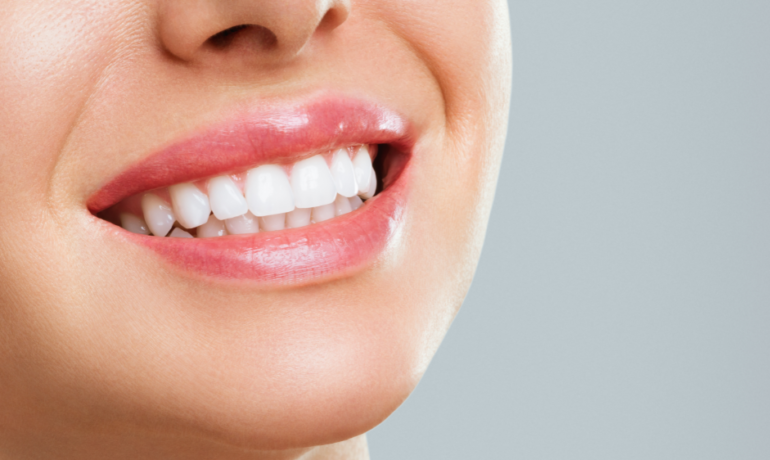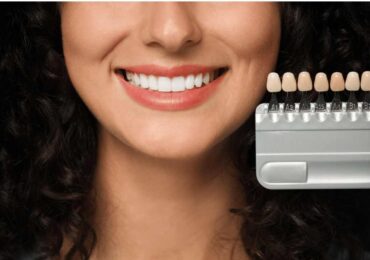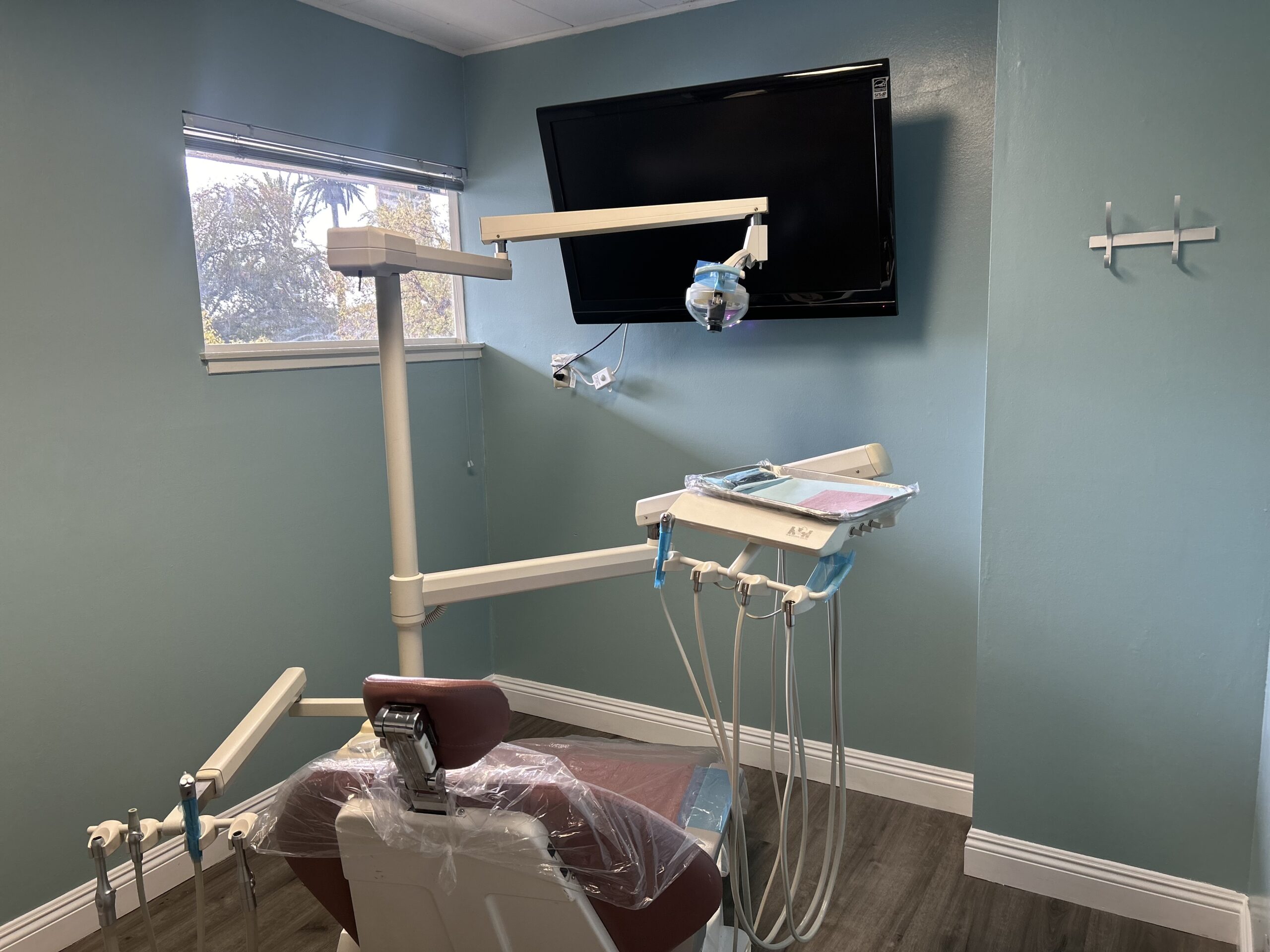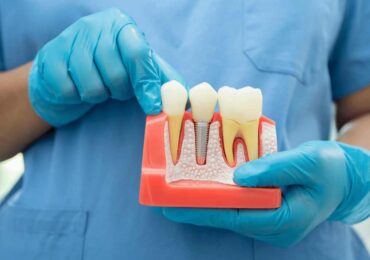Let’s say you suddenly realized that there was a chip or a break on one or all of your front teeth. Of course, your initial reaction would be to panic at the thought of your once-so-perfect smile becoming an annoying sight. Let’s not forget how this would make your life infinitely miserable due to the difficulty in chewing or even talking to people.
You don’t have to suffer, though, because chipped or broken teeth are fixable through front tooth crowns.
Front tooth crowns are incredibly valuable in restoring functionality and the aesthetics of your front teeth, and before you make the mistake of misidentifying front tooth crowns for regular crowns (as many people do), let us explain their uniqueness and effectiveness in this article.
Understanding Front Tooth Crowns
Front tooth crowns are tooth-shaped caps, typically made from materials like porcelain, ceramic, zirconia, or metal, that are placed on top of damaged or weakened front teeth. These caps are created to be thin, usually around two millimeters thick, yet remarkably strong. This allows them to restore the strength, functionality, and beauty of your front teeth for a long period without appearing unnatural.
Commonly, dentists recommend crowns for damaged, extensively decayed, weak, and badly maintained teeth. But if your front teeth have small problems or you’re worried about how they look, your dentist might suggest dental fillings, veneers, or bonding before suggesting a crown.
In other words, factors like the severity of the damage, location on the front tooth (central vs. lateral incisor), and cosmetic considerations influence the dentist’s recommendation for your front teeth. If well-maintained, front tooth crowns can last up to five to ten years.
Types of Front-tooth Crowns
Numerous types of dental crowns are available, and the most suitable one for you will be determined by your individual preferences and specific oral health requirements. Let’s discuss them one by one.
Ceramic Crowns
Pressed ceramic crowns feature a tough inner core. It replicates the natural translucency of tooth enamel. While they offer strength, ceramic crowns have drawbacks. Over time, the coating may chip, and they could gradually wear down the enamel on opposing teeth.
Metal Crowns
Dental technicians use different metals, like gold, to make crowns. Metal crowns rarely chip or break, last a long time, require little enamel removal, and can handle biting and chewing well. However, its metallic color may stand out and is noticeable because of the color difference.
Porcelain Crowns
Porcelain crowns mimic the appearance of tooth enamel more than any other crown type. They’re also a good choice if you have metal allergies. They are durable and gentle to your opposing teeth. However, porcelain crowns are more likely to chip or break if they endure excessive force or impact, in contrast to other materials.
Zirconia Crowns
Lab technicians use different materials to make ceramic crowns, and one popular choice is zirconium dioxide. These crowns are very strong and can handle heavy forces better than other ceramic types. Though durable, they may lack the translucency of natural teeth and may cost more compared to other crown types.
When getting crowns, it’s important to consider both the materials used and the extent of coverage they provide. For instance, full crowns offer complete protection by covering the entire visible part of the tooth, while partial crowns, like onlays or inlays, cover only a portion of the tooth, suitable for less extensive damage.
Benefits and Limitations of Front Tooth Crowns
The benefits of front tooth crowns are extensive such as enhanced strength and durability, improved chewing function, more definitive and natural-looking appearance, and optimized protection of weak or damaged front teeth.
On the other hand, potential limitations to this procedure would be that it is irreversible, with a small chance of causing complications such as chipping or loosening. The costs of this procedure can be unsightly for some patients too, which can range from $800 to $3000, depending on the materials used and one’s insurance coverage.
The Front Tooth Crown Procedure Explained
Conducting a front tooth crown operation involves several key steps:
- Initial Examination: This stage involves evaluating the tooth’s condition, including any decay or damage, and assessing the surrounding gums and bone.
- Preparation: After the assessment stage, your dentist will administer local anesthesia to numb the area. After that, your dentist will trim and reshape the tooth to accommodate the crown. This may involve removing any decayed or damaged portions and shaping the tooth to ensure a proper fit for the crown. Removing a small amount of tooth enamel may also be part (but not always necessary) of the process to create adequate space for the crown to fit seamlessly over the prepared tooth. By removing a small amount of enamel, the crown can be securely placed without altering the natural bite or causing any discomfort.
- Impression Taking: Next to the preparatory phase is the process where the dentist takes an impression of the tooth using digital scanning technology. This impression will be used to create a custom-fit crown.
- Temporary Crown Placement (Optional): If necessary, your dentist will place a temporary crown to protect the tooth while the permanent crown is being fabricated.
- Crown Fabrication: Either in a dental laboratory or using CAD/CAM technology, your dentist will fabricate the permanent crown from materials such as porcelain, ceramic, or metal alloy. This process ensures that the color and shape match the surrounding teeth for a natural appearance.
- Permanent Crown Placement: Once the permanent crown is ready, your restorative dentist will remove the temporary crown (if placed) and clean the tooth thoroughly. The last part of the crown placement involves cementing the permanent crown onto the tooth, ensuring a secure fit and proper alignment. Local anesthesia may be necessary to ensure the patient’s comfort during the procedure. It numbs the tooth and surrounding tissues, minimizing any discomfort or pain.
- Final Adjustments: Final adjustments are often necessary to check the bite and make and ensure proper alignment and occlusion. This procedure includes polishing the crown to achieve a smooth finish and a more natural appearance.
At the end of the entire procedure, a follow-up consultation is essential to guarantee optimal crown fit.
Recovery and Care After Getting Front Tooth Crowns
Post-procedure care instructions for front tooth crowns are crucial for ensuring the longevity and success of the restoration. Here’s an outline of the recommended steps:
Managing Initial Sensitivity – It’s common to experience some sensitivity immediately after getting a crown. Over-the-counter pain relievers can help alleviate any discomfort. If sensitivity persists or worsens, consult your dentist.
Maintaining Good Oral Hygiene Practices
Brush your teeth at least twice a day with fluoride toothpaste, floss daily, and rinse with an antimicrobial mouthwash. Be gentle around the crown area to avoid dislodging it.
Avoid Chewing on Hard Objects
To prevent damage to the crown, avoid chewing on hard objects such as ice, hard candies, or pens. Additionally, refrain from using your front teeth to open packages or bottles, as this can put excessive pressure on the crown.
Scheduling Regular Dental Checkups and Cleanings
Attend regular dental checkups and cleanings as recommended by your dentist. These appointments allow your dentist to monitor the condition of your crown, assess your oral health, and address any issues before they escalate. Professional cleanings help remove plaque and tartar buildup, which can contribute to gum disease and compromise the integrity of your crown.
Alternatives to Front Tooth Crowns
Alternative to front crowns for specific dental situations include dental fillings for minor damage like cavities or chips, dental bonding for cosmetic improvements such as discoloration or gaps, and dental implants for missing teeth or severely damaged teeth requiring extraction.
Dental Fillings
Dental fillings involve the removal of damaged tooth structures and filling the space with tooth-colored composite resin or porcelain material.
They are affordable, and less invasive compared to crowns. However, fillings may not be suitable for extensive damage, for they can chip or wear down over time, and may not always perfectly match the surrounding tooth color.
Dental Bonding
On the other hand, dental bonding involves applying a tooth-colored composite resin to improve the appearance of teeth affected by minor imperfections. The same as fillings, dental bonding is a cheaper alternative but is also less durable than crowns, may stain or chip more easily, and may potentially require more frequent repairs.
Dental Implants
Lastly, dental implants consist of surgically placing a titanium post into the jawbone to replace missing teeth or serve as an artificial tooth root for severely damaged teeth, with a crown attached to restore function and aesthetics.
A dental implant is a long-lasting solution for severely damaged front teeth. It may also promote improved jawbone health as it stimulates bone recovery. But implants are way more expensive than crowns and may not always be suitable for everyone, especially for those with insufficient jawbone density.
Nonetheless, consulting a dentist in Upland, California to discuss the suitability of a front tooth crown or other alternative options is crucial to personalize their treatment to a certain extent.
Where to Get Front Teeth Crowns in Upland, CA
At Upland Dental Practice, we’re here for all your dentistry needs. Our experienced team is ready to provide top-quality care and personalized treatments to give you the smile you desire. Trust us to deliver quality care and exceptional results. If you’re ready to transform your smile with front tooth crowns, book an appointment with us at Upland Dental Practice.
.
Need to Talk to a Dentist?
Recent Articles
- 1
- 2
- 3
- 4
- 5
- 6
- 7
- 8
- 9











